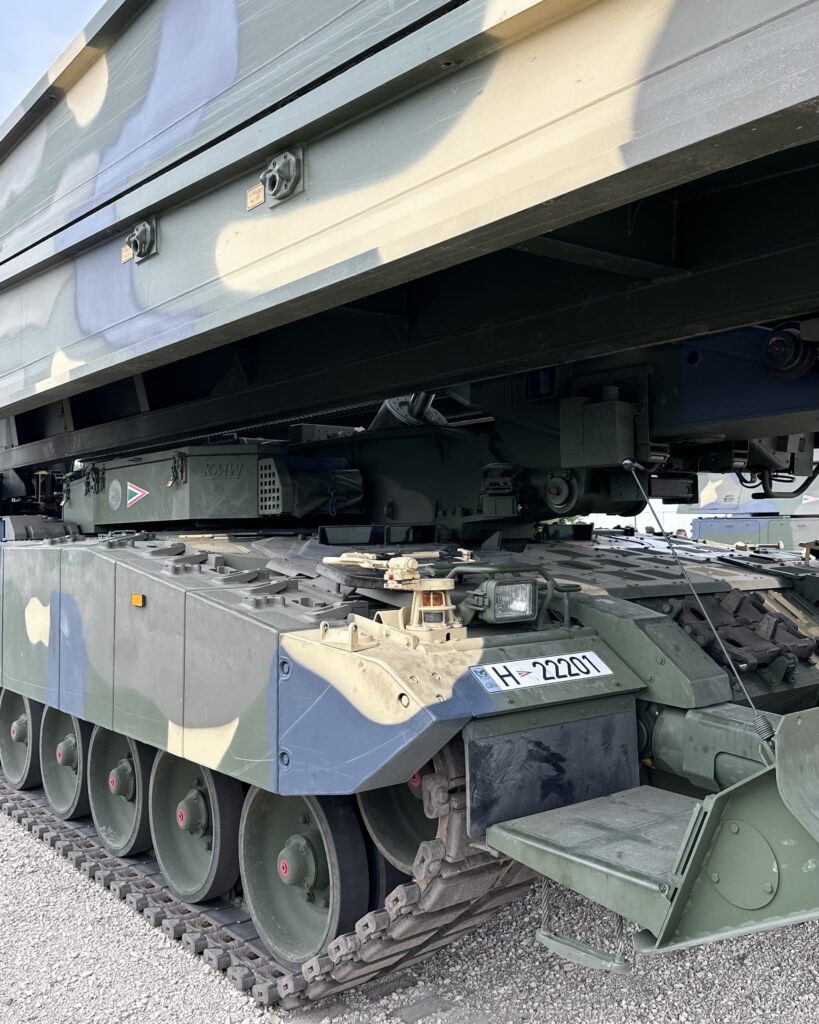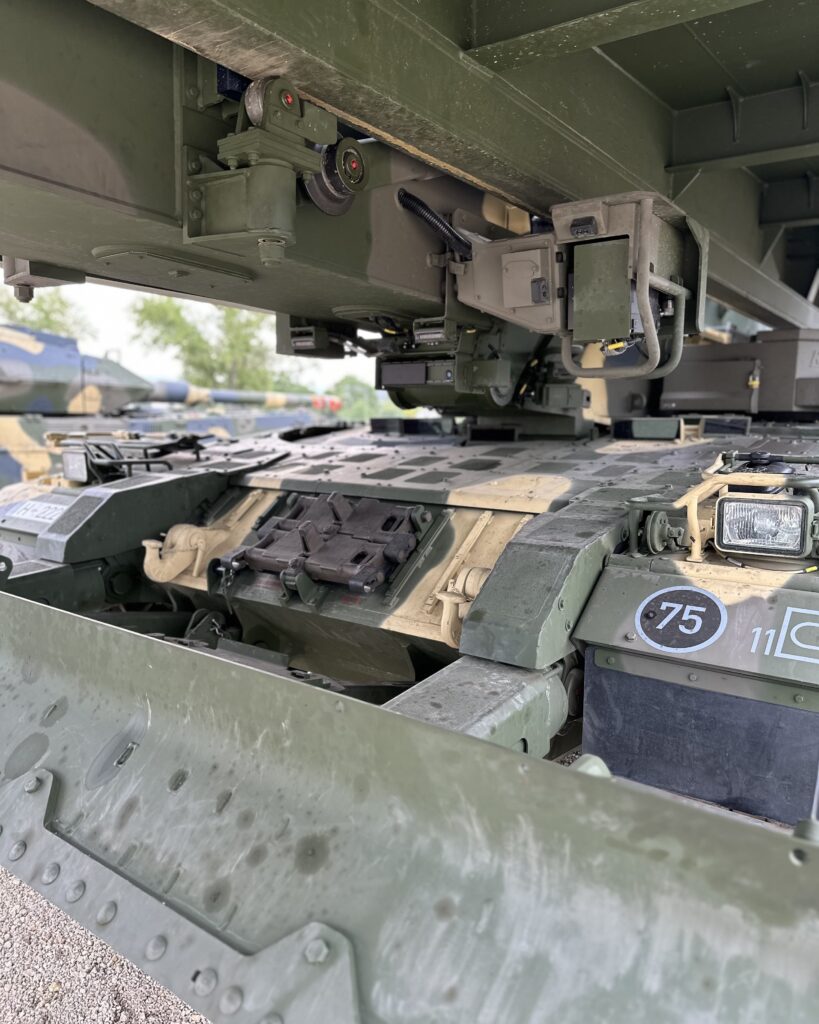The inaugural Veteran Infantrymen Meeting offered comrades, their families, and members of the press a valuable opportunity to observe the modern military capabilities of the Hungarian Defence Forces. Hosted by the MH 1 György Klapka Infantry Brigade on 4 July in Tata, the event showcased not only the renowned and respected PzH 2000 self-propelled howitzer and Leopard 2A7HU main battle tank but also included various other units and technical branches. Additionally, a significant technical advancement was unveiled: the Leopard 2 Leguan bridge-laying tank was demonstrated, exemplifying the Hungarian Defence Forces’ commitment to strengthening their mobility support capabilities.
The public debut of this tracked reptile not only showcased cutting-edge engineering but also sent a clear message about the Hungarian Defence Forces’ ambition to shape a more agile, mobile, and technologically capable force—prepared to carry on its back a heavy load like a Leopard 2A7+ main battle tank, with an approximate combat weight of around 65 to 67 metric tons, and be durable in the face of more complex challenges of contemporary battlefields. This article explores the Leopard 2 Leguan’s role in the Defence Forces’ ongoing modernization, offering a detailed technical analysis of its bridge-laying system and operational function, as presented in the scientific study by Tamás Bakos and Bálint Gábor Kapuszta.
Within the framework of the force development programme of the Hungarian Defence Forces, significant progress has been made in the modernization of the technical support capabilities required for the operation of heavy technical assets, particularly the Leopard 2 tanks. One outstanding example of this is the introduction of the Leopard 2 Leguan bridge-laying tank, which opens fundamentally new dimensions in the mobility support capabilities of the armed forces.

The role of bridge-laying tanks is to ensure the rapid and safe advancement of combat units, especially in situations where manoeuvres are hindered by water or other types of terrain obstacles. The previously used BLG 60M bridge-laying equipment was no longer able to meet the requirements of modern military technology, particularly concerning the increased weight of combat vehicles. The BLG 60M was capable of deploying a bridge of up to 19 metres in length, with a load capacity of only 50 tonnes, which could no longer safely support the weight of modern tanks such as the Leopard 2A7HU.
In contrast, the Leopard 2 Leguan system is a fully modernized modular bridge-laying solution built on the chassis of the Leopard 2 A5 tank. This not only ensures a high degree of mobility but also provides adequate armour protection for the crew, making the system suitable for deployment in direct combat environments. The Leguan can operate with two types of bridge configurations: a single 26-metre bridge element, or two 14-metre bridge elements connected together to allow crossings of up to 28 metres in length. The system’s load capacity is defined according to the MLC 80 standard, enabling the safe passage of tracked vehicles, including heavy tanks.
The bridge deployment process of the Leguan is fully automated and can also be controlled remotely, significantly increasing operational safety and reducing crew exposure. Through the horizontal so-called ‘push-out’ deployment method, bridge-laying can be completed within 5 to 6 minutes, while retraction takes approximately 7 to 8 minutes. The system is equipped with additional protective devices such as a machine gun, an NBC (nuclear, biological, chemical) filtration system, and smoke grenade launchers, and also includes a dozer blade for preparing bridge sites and clearing obstacles.
‘The Leguan can also be used for civilian disaster response purposes, such as road restoration following floods or earthquakes’
The main advantages of the system include high load-bearing capacity, quick and safe deployment time, modern digital control, and the fact that it is fully integrable with the existing Leopard 2 tank platform, thereby offering a logistically and maintenance-wise favourable solution. Furthermore, the Leguan can also be used for civilian disaster response purposes, such as road restoration following floods or earthquakes, making it a versatile asset within the equipment pool of the Defence Forces.
At the same time, the introduction of the system comes with challenges, primarily due to its increased weight and size, which require special transport equipment and infrastructure, as well as higher levels of technical support and personnel training.
In summary, the Leopard 2 Leguan bridge-laying system is a strategically important and technologically advanced asset that significantly contributes to enhancing the mobility and battlefield flexibility of the Hungarian Defence Forces. The availability of such a system ensures the manoeuvrability and adaptability of a modern force, both in conventional military operations and in non-traditional crisis situations.
Related articles:
The post Enhancing Battlefield Mobility: The Introduction of the Leopard 2 Leguan in Hungary appeared first on Hungarian Conservative.
Click this link for the original source of this article.
Author: Konrád Gazdag
This content is courtesy of, and owned and copyrighted by, https://www.hungarianconservative.com and its author. This content is made available by use of the public RSS feed offered by the host site and is used for educational purposes only. If you are the author or represent the host site and would like this content removed now and in the future, please contact USSANews.com using the email address in the Contact page found in the website menu.








